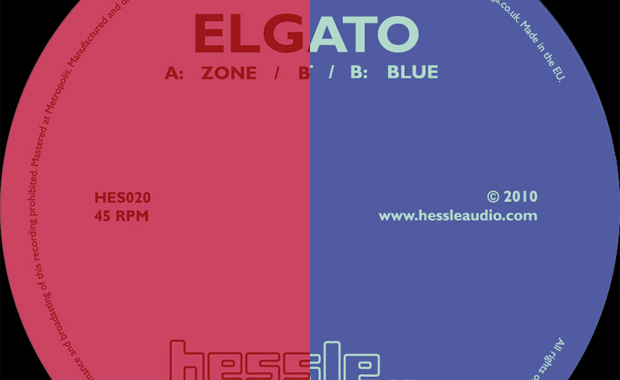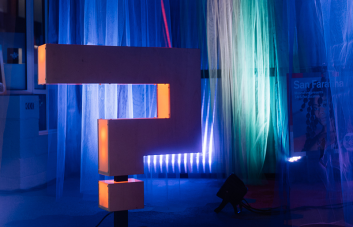Elgato, a name which we hope is a portmanteau of the Spanish word el gato, has not released a lot of music, but what we have heard has certainly piqued our interest. This should not surprise anyone familiar with his work: he makes very good and very interesting music. So far, Elgato has only released five tracks, each on Hessle Audio. Two tracks were released on his first 2010 12” single, “Tonight/Blue”, one on the 2011 Hessle Audio compilation “116 & Rising” and two more on his most recent 12” single “Zone/Luv Zombie”. His pieces match up sonically with the rest of the Hessle Audio catalog; however, the structure of Elgato’s arrangements raise a lot of questions. In “Blue”, for example, why does he have a 56-measure breakdown? Why does he have the tempo of “Zone” at a below-average 118 bpm? In every track, Elgato makes a conscious decision to do something that most other producers would not choose. The questions that arise when thinking about the atypical arrangements in Elgato’s music can help us think about arrangements in general within dance music, and what can happen when we decide to change those arrangements.
When we listen to Elgato’s music and think about the nature of his arrangements, it helps to consider some of his influences and to think about how those influences show up in his music. Every Thursday, Elgato, along with some friends, host the Bruk radio show on Sub.fm. Elgato plays a lot of UK Garage. It’s clear to see, then, how his Garage listening background informs his production. Elgato has, in every track, chopping vocals, shuffling percussion, and a lot of rumbling bass. We can hear these same elements in the work of a lot of different producers who comes from UK Garage backgrounds. Yet, if Elgato uses similar production techniques, then why does his music sound so different?
Stream: Boiler Room #25 Hessle Audio Takeover w/ James Blake, Untold, Elgato & Ben UFO
The differences in Elgato’s tracks come not from the production techniques that he enlists, but in the way that he structures his music. One example of Elgato’s atypical structure arises from Elgato looping sections of his tracks a lot longer than what we’re used to encountering. In “Zone,” for example, the sub bass remains present throughout the entire piece, with the exception of an eight-measure breakdown at five minutes into the track. Additionally, in Elgato’s productions, he takes what we expect from our dance music, and decides to not meet those expectations in one way or another. Most producers typically choose to have the sub bass added last to the track, eliciting the greatest crowd reaction; however, Elgato in “Zone,” approaches this expectation from another angle, and positions the sub bass as the first to show up and the last to go.
In general, we have a variety of expectations, especially when we go out dancing. Part of our expectations of course, deal with interactions with other people – who will we see that we know, who will we meet that we don’t know? Yet, another part of our expectations that we have when we go out involves the music that we anticipate hearing. We not only expect to hear certain type of music, but when we’re out on a dance floor, we expect to hear a certain arrangement or structure to the night. Typically the narrative of a night out works much like a story: the night begins subdued and eventually builds to a climax. Some criticize this, suggesting that hearing the same structure every night implies that DJs and dancers have no creativity.
However, others suggest that this arrangement serves to bring everyone together. Theo Parrish reminds us that all of the parts of the club experience, DJing and dancing, do not involve the individual at the center, but they involve the community. At a Red Bull Music Acadamy lecture he said: “[As a DJ], after a while you start to realize it has absolutely nothing to do with you and your competitive streak in your ego…Now that happens when you get to autopilot…Where you got a record, it’s wonderful and then somebody says: ‘Play the next song.’ You’re grabbing that song and you end up playing it right at the right time that the record’s over and you have just enough time to bring it in and everything is just moving in a great line… That’s called being ‘in line’. Being in line is beautiful. If you can get to that point, you’re in a really good shape, but those are very rare places.” Some DJs and producers choose to work with typical arrangements, and, according to Theo Parrish, we’re only trying to get to that moment so that we’re all “in line.” However, other producers work within contemporary arrangement ideas, changing them up for one reason or another. Elgato’s productions help us to think about why we have our anticipated arrangement standards, what we can change about them, what changing those standards may mean for our expectations on a night out, and how we can all get in line.



